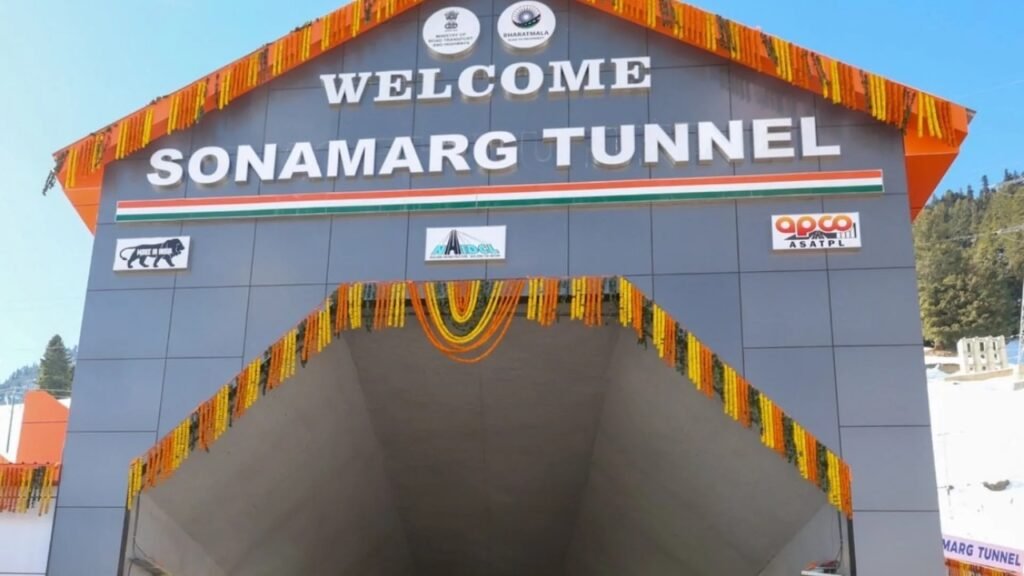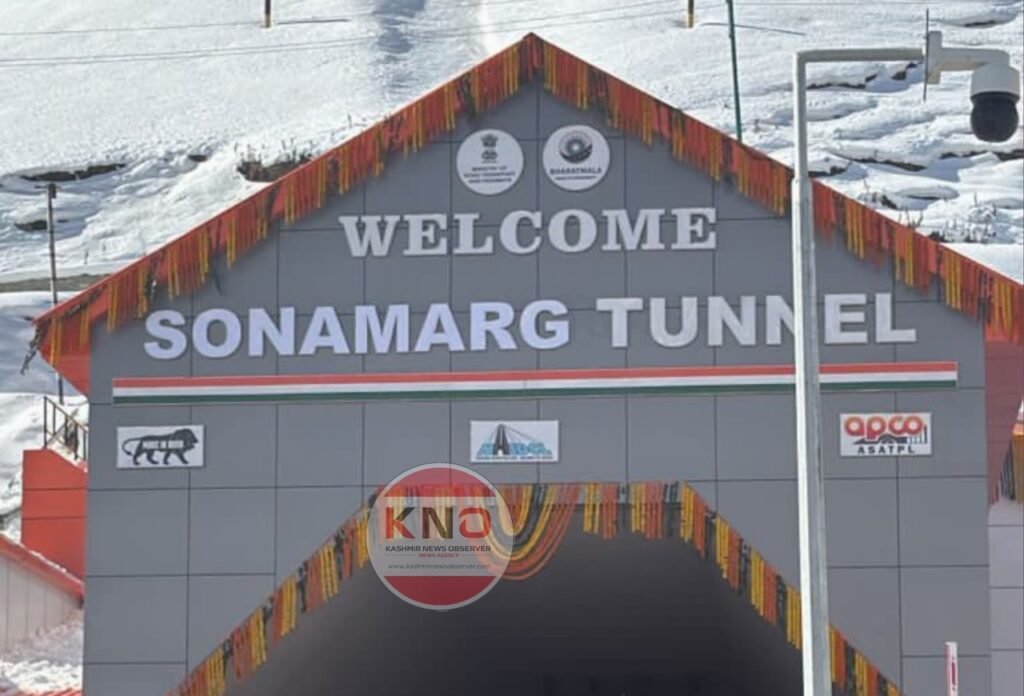Sonamarg, meaning “Meadow of Gold,” is more than just a breathtaking hill station in Jammu and Kashmir. Set against a backdrop of snow-covered Himalayan peaks and sprawling meadows, it has been a linchpin of trade, pilgrimage, and natural wonder for centuries. Located around 80 kilometres from Srinagar at an altitude of 2,730 meters, Sonamarg captivates travellers with its historical Silk Route connections, rich culture, year-round adventure options, and eco-tourism significance.
History of Sonamarg
Sonamarg’s story stretches back over 2,000 years. As a pass on the legendary Silk Road, it linked Kashmir with Tibet, Persian kingdoms, and central Asian trade centres. Excavations in the region, particularly at Burzhama on the Sindh River, have unearthed pottery, coins, and relics attesting to ancient commerce and cross-cultural exchanges. Noteworthy rulers, including King Pravarasena II, Mauryas, Kushanas, Mughals, and Sikhs, controlled this critical outpost, ensuring Sonamarg was always in the historical spotlight.
Apart from its political significance, Sonamarg has deep mythological connections, especially to the Hindu deity Shiva and the sacred Amarnath Cave, which are linked by pilgrimage routes that still originate from this region. The Sindh River, which cuts through the meadow, is considered holy, further cementing Sonamarg’s place in South Asian lore.
Culture and Heritage
Sonamarg’s culture is a vibrant blend of Buddhist influence, Kashmiri traditions, and remnants of its ancient trade connections. The Nilgrad Buddhist Monastery, dating to the 7th century, exemplifies the valley’s rich past. Local festivals often reflect a mix of Hindu, Muslim, and Buddhist practices, with hospitality and folklore playing a central role in daily life.
Sonamarg’s summer festivals, organised to promote local crafts and music, draw visitors from around the world. The local populace, although small and primarily seasonal, offers authentic Kashmiri experiences, particularly in cuisine, traditional woven shawls, wooden handicrafts, and folklore storytelling.
Location and How to Reach Sonamarg
Sonamarg is strategically situated in the Ganderbal district, 80 kilometres northeast of Srinagar, and just before the famous Zoji La Pass–the gateway to Ladakh. The journey from Srinagar to Sonamarg is a scenic drive via National Highway 1 (NH 1), flanked by forested valleys and snowy outcrops.
With the recent inauguration of the Z-Morh and Sonamarg tunnels, year-round access to Sonamarg is now possible, overcoming past travel blocks caused by heavy winter snowfall and avalanches. This infrastructure marvel was inaugurated in January 2025, drastically reducing travel time and increasing vehicle accessibility, thus also enhancing the region’s strategic and economic significance.
Route Information:
- From Srinagar: 80 km (approx. 2–3 hours by car or bus via NH 1).
- Nearest Airport: Sheikh ul-Alam International Airport, Srinagar.
- Best travel options: Shared cabs, private taxis, buses (season-dependent).
Sonamarg’s Tourist Spots
Sonamarg boasts a plethora of attractions, making it a traveler’s paradise. Notable places and experiences include:
- Thajiwas Glacier: The most iconic site, ideal for trekking and pony rides, with access to waterfalls and ice bridges.
- Zoji La Pass: A dramatic mountain pass leading to Ladakh, monumental for road trips and panoramic views.
- Baltal Valley: A lush base camp for the Amarnath Yatra, bustling each summer with pilgrims and hikers.
- Vishansar and Krishansar Lakes: Alpine lakes famed for their crystal waters and trout fishing, approachable via challenging treks.
- Sindh River: Perfect for trout fishing and river rafting, hosting national and international tournaments.
- Nilgrad River: Known for its reddish-colored water, a curiosity for trekkers and photographers.
- Gangbal and Gadsar Lakes: More remote, but worth visiting for seasoned trekkers and adventure seekers.
For those keen on quieter discoveries, Sonamarg offers less-travelled trails, small Buddhist monasteries, and meadows ablaze with summer wildflowers.
Revenue and Economic Impact
Tourism remains the backbone of Sonamarg’s economy. Hotels, homestays, local shikaras (pony rides), craft markets, and river-based activities generate substantial seasonal revenue. The opening of the Sonamarg Tunnel and the enhancement of infrastructure are expected to further boost the local economy, transforming Sonamarg from a seasonal destination into a year-round tourism hub.
Beyond tourism, Sonamarg remains significant for agricultural and grazing communities who utilise the plains in summer. The site also holds strategic military value, housing several Indian Army outposts due to its proximity to Ladakh and the contentious northern frontiers.
Climate and Best Time to Visit
Sonamarg features a humid continental climate, characterised by cool summers and harsh, snowy winters. The region is renowned for its dramatic seasonal transitions:
- Summers (May-September): Lush green meadows, wildflowers, and clear trekking paths. Ideal for all activities, including rafting, trekking, camping, and picnicking.
- Winters (November-March): Heavy snowfall makes most of Sonamarg inaccessible except to adventure enthusiasts or with the new tunnel, select tourist amenities remain operational.
The annual transition from winter to spring is especially stunning, marked by the first snowfall in Sonamarg’s valleys and the gradual melting of glacial ice.
Sonamarg’s Recent Developments and 2025 News
On January 13, 2025, Prime Minister Narendra Modi inaugurated the Sonamarg Tunnel, a vital project aimed at enhancing all-weather connectivity to Ladakh. With this tunnel, Sonamarg is now easily accessible, even in winter, and is expected to attract larger numbers of tourists throughout the year for adventure sports, pilgrimages, and leisure activities.

Sonamarg is making headlines for rapid growth in tourist arrivals, ongoing environmental conservation efforts, and infrastructure advancements, positioning it as a vibrant year-round Himalayan resort.
Sonamarg in the Future: What’s Next?
With its enhanced connectivity after tunnel inaugurations, Sonamarg is quickly becoming a year-round draw for tourists, adventure enthusiasts, and pilgrims. Future plans include the development of sustainable tourism, the preservation of the fragile Himalayan ecosystem, and the maintenance of its unique blend of natural beauty and cultural depth.
FAQs about Sonamarg
What is the best time to visit Sonamarg?
The best time is between May and September when the weather is mild and trekking routes are open.
How can travellers reach Sonamarg?
Sonamarg is easily accessible by road from Srinagar via NH 1, and tunnels like Z-Morh and Sonamarg have made it an all-weather destination.
Which adventure activities are offered in Sonamarg?
Top activities include trekking to glaciers and alpine lakes, trout fishing, white-water rafting, camping, pony rides, and mountain biking.
What are the most important tourist attractions?
Must-visit spots include Thajiwas Glacier, Zoji La Pass, Baltal Valley, Vishansar Lake, Krishansar Lake, and the Nilgrad rivers.
Are there any pilgrimage sites in Sonamarg?
Yes, Sonamarg is the base for the annual Amarnath Yatra, one of Hinduism’s holiest pilgrimages.
What is the altitude of Sonamarg?
Sonamarg is situated at an elevation of approximately 2,730 meters above sea level, offering spectacular views and a cool, alpine climate.
Is Sonamarg suitable for families and solo travellers?
Absolutely, its broad range of attractions caters to all age groups and travel preferences, from adventure-seekers to relaxed family outings.
What’s unique about Sonamarg’s culture?
The culture is a blend of influences from Kashmir’s Hindu, Buddhist, and Muslim communities, as evident in local festivals, crafts, and cuisine.
